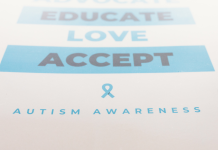 We’ve all been there. On your last straw of the day when suddenly your child decides now is the time for a meltdown. Losing your patience in these moments happens – no one’s perfect. Yet the most effective way to regulate your children’s emotions is to first regulate your own. Below are a few tips to help navigate these challenging moments of emotional expression!
We’ve all been there. On your last straw of the day when suddenly your child decides now is the time for a meltdown. Losing your patience in these moments happens – no one’s perfect. Yet the most effective way to regulate your children’s emotions is to first regulate your own. Below are a few tips to help navigate these challenging moments of emotional expression!
When a child becomes dysregulated, you are likely going to feel the activation of their state resonating in your system. Biologically, this makes sense – you are designed to be attuned to your child’s emotional state. Children are born with underdeveloped nervous systems that are sensitive to the world around them. In the first years of life, a child’s nervous system will co-regulate or “mirror” that of the adults around them. Children learn to co-regulate before they learn how to effectively self-regulate.
When your child has a meltdown, first check in with yourself. Ask yourself how you feel right now. Overwhelmed? Confused? Anxiety? Take a moment to assess what your needs are.
You might like to experiment with a few deep breaths, shaking it out, having a sip of water, or giving yourself a little pep talk. If you have regulated yourself first, your child can lean into you and borrow the part of you that is grounded and level-headed. This allows your child’s nervous system to begin to settle.
It can also be helpful to view your child’s behaviors and emotions through a lens of curiosity. What is going on under the surface? Their behaviors and emotions can give us a sense of what might be going on in their developing nervous systems. Curiosity allows you to pause, notice that your child is upset, check-in, and ground yourself in loving kindness for them and yourself. Without this step, we might be feeding off their emotions and reacting from a place of anger, frustration, or worry. Curiosity can guide you into co-regulatory support, which helps your child navigate and regulate their emotions through their experience and back to a place of regulation.
Validation can also be extremely helpful. According to physiology, there is no such thing as a bad emotion (though uncomfortable, challenging, or difficult).
Validating your child’s emotions creates a welcoming environment for ALL emotions and promotes healthy expression rather than suppression. “You’re upset. I would be too!” or “I’m sorry that made you feel sad. That must be tough!” You can even ask if you’re not sure what the emotion is. “Looks like you’re feeling frustrated. Am I getting that right?” Let your child know you see and understand the emotion they are feeling.
Model how to safely and appropriately express these emotions. Once you do this it will help your child “discharge” the stress hormones of adrenaline and cortisol that accompany their emotional responses. This is especially important, as the buildup of stress hormones can create toxic stress which impacts brain development, nervous system health, hormones, immune function, and more. If your child is feeling sad or lonely, co-regulate through touch, rocking, crying, or getting into sensory play. Maybe they are feeling panic or worry, try jumping in place, lifting and lowering your heels, dancing, or shaking them out. If the feeling is anger, experiment with growling, clenching fists, pretending to be a ferocious animal, or slamming a pillow on the ground.
Once you help your child discharge the energy of the emotion, take a moment to allow them to settle back into feeling safe.
Now these moments are tough, but you weathered the storm! Anchor them into safety through touch (hugs, cuddles, rocking), helping them get curious about their environment, getting outside in nature, or simply connecting with an activity that your child typically enjoys!
As always, remember to offer yourself compassion through this process. Some of us grew up without learning how to co-regulate. This terrain can feel all new to even seasoned parents.
If you’re interested in learning more about nervous system regulation, feel free to check out Felt Sense Psychotherapy, where I offer 1:1 and group somatic psychotherapy for women looking to heal from trauma.









